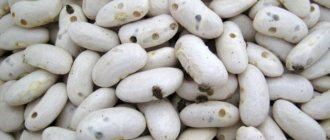Melon is a juicy, aromatic and healthy dessert. It cleanses the intestines, removes waste and toxins. Another of its advantages is its rejuvenating effect. The composition of melons includes: potassium, magnesium, iron, phosphorus, vitamins C, A, group B. But most importantly, this sweet fruit can be consumed without harm to the figure - its calorie content is only 38 kcal per 100 g of product.
But how to choose a fragrant and sweet melon so that it gives pleasure and brings maximum benefits? And what should you do if the purchased fruit turns out to be slightly under-ripe? Read on to learn how to choose the right ripe melon and how to ripen melons.
Choosing ripe
There are several signs by which the degree of melon ripeness is determined:
- Aroma. Ripe melon has a sweet and pleasant smell. When choosing it at the market or in a store, pay attention to the aroma first.
- Skin. When you press on the peel, it springs elastically and easily restores its shape; its color should be bright (depending on the variety) with a pattern similar to cracks and cuts.
- Heaviness. The weight of a ripe fruit is significantly greater than that of an unripe one. First, select a green melon and a ripe one of about the same size. Hold both in your hands - everything will become clear.
- Nose and tail. The first should be soft, and the second thick and dry.
- Sound. If you knock on a ripe fruit, it will be deaf.
Note! The skin of an overripe melon will be too soft. If the skin is too hard, the fruit is unripe.
How to determine the degree of ripeness of a melon
Meanwhile, it is not difficult to determine whether the pumpkin is ripe to standard. And the main assistant in this is smell. A fully ripe pumpkin will definitely have honey or floral aromas with a spicy undertone. And the absence of a pleasant smell is guaranteed to indicate that the fruit is unripe.
In addition, the level of ripeness of a given product can be determined by:
- the stalk, which should be dry and easily separated from the fruit, while an unripe pumpkin has a green stalk;
- by the dull sound that a ripened product makes when patted with the palm of your hand;
- by the even and uniform condition of the peel, if we are talking about single-colored fruits.
Will it be possible to ripen at home?
Can melon ripen at home? Yes, it ripens not only in the garden. It is enough to place the fruit in a dark, warm or cool (depending on the variety), dry place. Early varieties ripen faster - warmth suits them; late varieties, on the contrary, cool. The optimal temperature for storage is 0 °C.
The shelf life of sweet melons can be long if they were prepared for this in advance: cut at the right time (not green and not quite ripe), heated in the beds. Premises for long-term storage should be dry, dark and cool.
If you bought a melon, and later, upon closer inspection, discovered that the fruit is green, do not be upset. He may well finish it by lying at home. The main condition for successful ripening is not to cut the melon. Once cut, it will not be able to be stored and ripened for a long time.
How long will it lie
A melon picked before its due date (completely green) does not ripen well or remains unripe. At the same time, her taste deteriorates. Gardeners have noticed that fruit covered with a pronounced mesh ripens better.
The storage duration is also affected by the variety. Early varieties are stored for only a week after being removed from the garden. Mid-early and a small number of early varieties can last up to 21 days.
What to do if the melon is not ripe
What to do if the melon is not ripe? It was probably taken from the garden when it was green, and that’s why it doesn’t ripen. Experienced housewives advise not to be upset and use the fruits for culinary purposes . For example, make jam.
The recipe is simple. The melon is washed, peeled and cut into cubes. Per kilogram of raw materials you will need 1.2 kg of sugar. Half of its volume is poured into the cubes overnight, or for 12 hours, so that the pulp produces juice. Then add the remaining sugar and let it simmer for 8-10 minutes. Then the syrup is left to cool thoroughly (for 7-8 hours) and boiled again until ready. The result is a delicious, aromatic jam.
If you add lemon or orange zest, it will be even tastier. You can also add a cinnamon stick per kilogram of raw materials or ginger. The taste is spicy. If you twist the pulp and boil it with added sugar, you get a delicious puree.
Choosing optimal conditions for ripening
It is best to send sweet fruits of late varieties for ripening. During ripening, such varieties acquire sweetness and benefits. But early varieties can also ripen at home, although their taste will deteriorate slightly. For ripening, choose a dark, well-ventilated, warm and dry place.
To make the melon ripen at home, do the following. If after several days ripening does not occur, experienced gardeners advise placing a ripe apple next to it (it accelerates ripening).
If the variety is late, then it ripens longer and needs to sit not for a couple of days, but for two or three weeks, or even a month. What can be done to achieve such fruit? It is better to ripen late varieties in cool, dry and dark rooms so that they do not spoil in the heat.
Be careful ! It is better for those with diabetes to avoid melon. Ulcers and gastritis are also reasons to reduce the consumption of melons to a minimum. Nursing mothers are not recommended to eat more than one or two pieces, otherwise the baby may experience bowel problems.
We store it until it's ready
Will the green melon make it home? To make it “get there”, use the recommendations of the previous chapter . There are several other features that should be taken into account when storing the product. After picking or purchasing, it is advisable to place the fruits so that they do not come into contact with each other.
This method of ripening has proven to be excellent: hanging melons in a net or bag in a room with appropriate conditions (dark, cool, dry). The tails are not torn off or cut off - rotting may begin in this place.
Growing seedlings
All melons are quite fragile, which is why many vegetable growers do not plant them in advance, which is fundamentally wrong.
In order to get sweet melon fruits at the beginning of August, it is better to plant the seeds in special peat tablets or small cups . In this case, it will be possible to avoid death due to a sudden drop in ground temperature. Melons grow in cups the same way as in open ground.
Seed preparation
For planting, select seeds collected 2 or 3 years ago. Last year's seeds grow into plants with powerful stems, but a minimal number of ovaries (flowers are predominantly male). It is unlikely that you will be able to get a good harvest of melons.
Before planting you need to:
- check the quality of seeds;
- carry out hardening;
- stimulate growth rate.
To check the quality, the seeds are dipped in a solution of table salt and kept in it for at least 25 minutes. Floated seeds are considered unsuitable for planting.
To protect future seedlings from weather changes and to ensure better germination and growth rate, the seeds are hardened.
For this:
- heat the water to a temperature of 35 degrees and fill the container with the seeds with it;
- leave in this position for a day in a warm room;
- after 24 hours, the seeds are removed from the water and placed in the refrigerator for another 18 hours.
If the weather outside is warm or the seeds are planted in a greenhouse, then hardening is not necessary.
It is enough to fill it 12 hours before the planned planting using a solution of boric acid and zinc sulfate (or use another growth stimulator).
To protect the seeds from rotting during the growth process, they are placed for 15-20 minutes in a 2% solution of potassium permanganate (1 teaspoon per 0.3 liter of water).
Planting seeds
Technology for planting seeds at home:
- When planning to sow seeds directly into open ground, wait until warm weather sets in. The soil layer must warm up to a temperature of at least 12 degrees. Plants do not germinate well and do not grow at low temperatures. When using cups or peat tablets, planting is carried out no earlier than 2 weeks before planting the seedlings in open ground.
- In cups with a diameter of less than 10 centimeters, 1 seed is planted to a depth of 15 millimeters.
- Containers filled with seeds are placed on a well-lit windowsill and watered with a small amount of warm water.
It is important to remember that melon is heat-loving; until the first shoots appear, the room temperature must be maintained at 27-30 degrees. Seeds do not grow well in the cold.
When planting seeds in containers, particular importance is attached to the quality of the soil mixture.
Seedlings grow best in soils consisting of the following elements:
- humus;
- garden soil;
- sand;
- purified peat.
Everything is taken in equal quantities and must be enriched with mineral fertilizers designed specifically for melons.
Seedling care
Care includes the following:
- The first shoots will appear after 10-15 days, but seedlings are planted in open ground no earlier than after 30-35 days.
- After seed germination, the air temperature in the room is reduced to 20-25 degrees.
- The seedlings are watered with warm water. Do not flood the pots; water should not get on the leaves.
- About a week before planting in open ground, melons begin to harden, for which the air temperature is reduced. This is done gradually, during the day the air in the room is heated to 17 degrees, at night only to 12-14.
- The room is regularly ventilated.
- No earlier than 10 days before planting, complex fertilizers are applied to the soil.
Rules for choosing ripe delicacies
For long-term storage, only good ones are selected, without dents, cracks, scratches or signs of rotting melons. Damaged skin of the fruit allows pathogenic microflora to penetrate inside. Instead of enjoying exquisite taste, you can end up in a hospital bed.
Before August, you can hardly expect to buy really ripe and tasty fruit. If you purchase it ahead of time, you may end up with a product of dubious quality. We discussed the rules for choosing a fragrant dessert, common to all melons, in the first chapter. But there are some nuances for individual varieties:
- Kolkhoznitsa variety should be aromatic: even an uncut melon has a rather strong honey-vanilla or pear smell, its color is bright yellow;
- Torpedo melon is also chosen by smell, and attention is also paid to the rough “mesh” on the peel - the more grooves, the sweeter the fruit;
- ripe Ethiopian is yellow-orange, the smell is pronounced, with a pineapple note.
It is important to know! It is better not to buy an odorless melon - it is either completely green, or when growing it, they went too far with nitrogen fertilizers.
To avoid disappointment
The first rule that should be followed when buying melons is the correct choice of place of purchase. Supermarkets and specialty markets are fine. Here the conditions for storage are appropriate, since these places are controlled by sanitary authorities.
Do not hesitate to demand a certificate for the product. Conscientious entrepreneurs definitely have it, but it is better to avoid unscrupulous ones. Buying melons from the road side is risky. Fruits kept in such conditions for a long time become saturated with toxins, heavy metals, and are stored without observing sanitary standards, which will inevitably affect the taste and usefulness of the product.
It’s also not worth purchasing cut fruit - it is unknown how long it spent on the counter in this form.
In the table we will look at the signs that it is better to refuse the purchase if you find them.
| Sign | What's the downside? | Why is it better not to use |
| The skin is shiny and leaves a greasy mark on your hands. | The fruit was grown using waxes that protected the melon from spoilage. | The benefits of waxes for the body are very questionable, and the taste of the product deteriorates. |
| Excessively dirty peel. | Most likely the harvest took place in the rain. | The taste of this fruit is unimportant, the flesh is watery. |
| Peel too clean. | Before reaching the counter, the melon was washed. | Fruit washed before transportation or sale looks beautiful, but such a procedure deprives it of natural bactericidal protection. |
| Brown spots on the peel. | Such spots are the first sign of rotting. | Rotten foods are of little use, and there is a chance of getting poisoned or infected. |
Description of the variety
The variety was bred by Uzbek breeders and was named Mirzachulskaya in the original language; in Russia, during registration after experiments, it was given the name Rainbow for its interesting color and roughness on the peel. The Uzbek melon was popularly called Torpedo for its shape, as it is very similar to this projectile.
Torpedo is characterized by high fertility (up to 3 kg per 1 sq. m), elongated oblong shape, large fruits growing from 5 to 10 kg, sometimes up to 15 kg. The skin is a rich yellow color, painted along with silver veins.
Late ripening variety. Average resistance to pests and diseases. The taste of melon is rated on a 5-point scale at 4.5 points, the pulp is juicy, oily, light yellow in color, and has a high sugar content. The aroma of melon is honey-vanilla, bright.
Melon produces many seeds that have high germination rates within 2-3 years. Torpedo shoots quickly grow up to 2 meters, forming many side shoots. Therefore, it is necessary to normalize the shoots in order to grow a good harvest.
Is unripe fruit harmful?
The maximum amount of nutrients is concentrated in the ripe product. Therefore, an unripe or overripe delicacy will not bring any benefit. In addition, eating green fruit can cause digestive problems. Especially if a person has gastrointestinal diseases, such as gastritis, stomach ulcers. In this category of people, unripe fruits can provoke an exacerbation of the disease.
Even healthy people may experience bloating or upset bowel movements.
On Internet forums, melon lovers quite often mention dishes made from unripe melons. Melon jam, candied fruits or pickled melons are especially popular. We advise you to treat such recipes with caution.
On a note. In order for the melon to bring maximum benefit and not cause harm, you need to follow some rules. It is better to eat it not on an empty stomach, but between meals. It is not recommended to drink water. It is not advisable to eat dairy or fermented milk products after or before melon - you may get an upset stomach.
Beneficial properties of the variety for the health of the human body
The amount of vitamins and nutrients collected in the “sunny fruit” of melon can satisfy the daily requirement of some elements or most of it, namely silicon, vitamin C. They can improve the functioning of cells in the body, activate and strengthen the immune system. Be the prevention of colds and viral diseases, as well as have a beneficial effect on the gastrointestinal tract, cardiovascular system, improve blood composition and stimulate collagen production.
For a man
Men can eat not only the pulp of the Torpedo melon, but also the seeds and peel. The benefit of the seeds is the presence of an aphrodisiac, which affects the production of male hormones and increases potency. Due to the fiber content, ash helps improve intestinal function, which is especially important for men who lead a sedentary lifestyle (office work, driver).
The pulp contains substances that affect the functioning of the kidneys and genitourinary system, as well as a large volume of water up to 90%, which allows you to remove excess liquid and sand.
For woman
In 100 g of pulp there is more than 4% of the daily requirement of folic acid, silicon 23%, cobalt 57%. In combination, all these substances help a woman bear and give birth to a healthy child. Vitamin A, which is 22% of the daily value, improves vision, this is especially important for those who constantly do paperwork and sit in front of a computer monitor for a long time.
What to cook with unsweetened melon? 5 best recipes
Melon is a sweet juicy aromatic fruit, which is also called a sweet vegetable. Because it is a relative of pumpkin, squash and cucumber. Although it doesn’t taste even close to any of the vegetables.
However, it often happens that the melon is unsweetened, hard, without a strong aroma and practically inedible. No one will want to eat this, and no one will raise their hand to throw away an unspoiled product. In this case, you can get out of the situation by preparing some tasty treat from the unsweetened fruit.
What to cook from unripe and unsweetened melon? The choice of dishes is quite extensive, because... the fruit goes well with almost all vegetables, fruits, seafood, cheese, chicken, ham and other products. Therefore, it is perfect for preparing salads, appetizers, and soups.
Unsweetened melon will turn out very tasty if you marinate it and serve it with poultry or meat.
Substandard fruit can serve as an excellent filling for a sweet pie or charlotte. Next, let's look at a few simple recipes.
Charlotte
mingerspice/Flickr.com
In the usual sense, charlotte is a pie with apples. But its taste can be diversified if you use melon with dense pulp.
Ingredients
- 4 small pieces of melon;
- 1⅓ cups flour;
- ½ cup sugar;
- 2 tablespoons cane sugar;
- 1 glass of kefir;
- 2 eggs;
- 1 teaspoon baking powder;
- 1.5 g vanillin;
- cinnamon on the tip of a knife.
Preparation
Using a mixer or whisk, beat the eggs with sugar, then carefully pour in the kefir and mix thoroughly again. Add the dry ingredients (flour, baking powder and vanilla) and pour the dough into a silicone mold.
If the apples are placed downwards, then it is better to place the melon on top of the dough. To do this, cut it into thin slices. Sprinkle cane sugar and cinnamon on top of the cake. Bake for half an hour at 200°C.
The process of ripening melon at home
Owners of plots where, due to weather conditions, melon fruits did not have time to ripen, have to decide whether the crop will ripen if it sits plucked at home, and what to do, where to put the pumpkins so that they can ripen well after lying for some time. time under suitable conditions.
Late-ripening varieties best answer the questions of whether a melon ripens, ripens, or ripens not in a melon patch, but indoors, and whether it can fully ripen in it.
They are not only able to ripen outside the melon, but also acquire additional taste qualities that freshly picked pumpkins lack. But at the same time, you need to clearly know how to do this, how to ripen the fruits as efficiently as possible.
Experts recommend:
- For ripening, select only intact melon fruits;
- do not remove the stalks from them in order to avoid the start of the rotting process in this particular part of the pumpkin;
- for 1 week (and late-ripening varieties - 2 weeks), place the fruits in a dry and well-ventilated place, while avoiding contact of the pumpkins with each other;
- turn the pumpkins every 4 days;
- if there are few fruits, then they can be ripened in nets or canvas bags, hanging in a dry, cool and darkened room;
- You can also use wooden cages, lining their bottom with straw, on which the fruits are located without touching each other.
Read also: Simple bell pepper dishes
Diseases and pests
The southern melon crop in the middle zone is attacked by bacterial, fungal, viral diseases and pests.
- Anthracnose . Brown, pink spots and torn holes appear on the leaves. The leaves gradually turn yellow, die, and fall off. The fruits become deformed and rot. To treat the crops, they are sprayed with Bordeaux mixture.
- Root rot . Appears when there is excessive soil moisture. External signs are thinning of the stems, lethargy of the leaves, rotting of the fruits from the middle. Control methods include loosening the soil and reducing the amount of watering.
- Fusarium wilt. The defeat of culture is rapid. The leaves become light and spotted. Within a week the culture dries completely. To prevent disease during budding, spray with a solution of potassium chloride.
- Powdery mildew. The main symptom is a white coating on the leaves. Then they darken and fall off. Treatment is spraying with faith powder every 10 days throughout the growing season. A month before harvest, the procedure is stopped.
- Melon fly. The larvae directly attack the fruits. They make their way inside, feed on pulp and juice. The fruit becomes unfit for consumption. The main sign of damage is rotting spots on the skin. They use biological and chemical control methods. It is impossible to destroy the larva inside the melon; all efforts are directed towards baiting the flies. They use Actofit, Fitoverm, Mikosan.
- Spider mite. Lives on the inside of the leaf. The first signs are the presence of cobwebs. The pest sucks juices from leaves and buds. For destruction, preparations containing sulfur, phosphorus, and acaricides are used.
- Melon aphid . Small pests hide on the back side of the leaf, but with severe infestation they are visible on the stems and inside the flowers. Massive destruction of culture is dangerous due to complete withering. To exterminate a colony of pests, folk remedies are used with the addition of soap, baking soda, salt, Actellik, Karbofos.
The most dangerous pest is the melon fly. Capable of destroying half the crop.
When does it ripen and where does it grow?
The ripening season begins no earlier than 3 months after planting in the soil, by the end of August. The variety grows in Asia Minor and in most Russian farms in the southern regions and central regions. It is also grown in European countries with warm climates.
In Asia Minor, the fruits reach a maximum size of up to 1.5 m in length. In Russia and Europe, the weight of grown melon does not exceed 7-8 kg. This variety is used by farmers for industrial cultivation due to its good keeping quality and excellent transportability. Technical maturation occurs no earlier than after 60 days.











